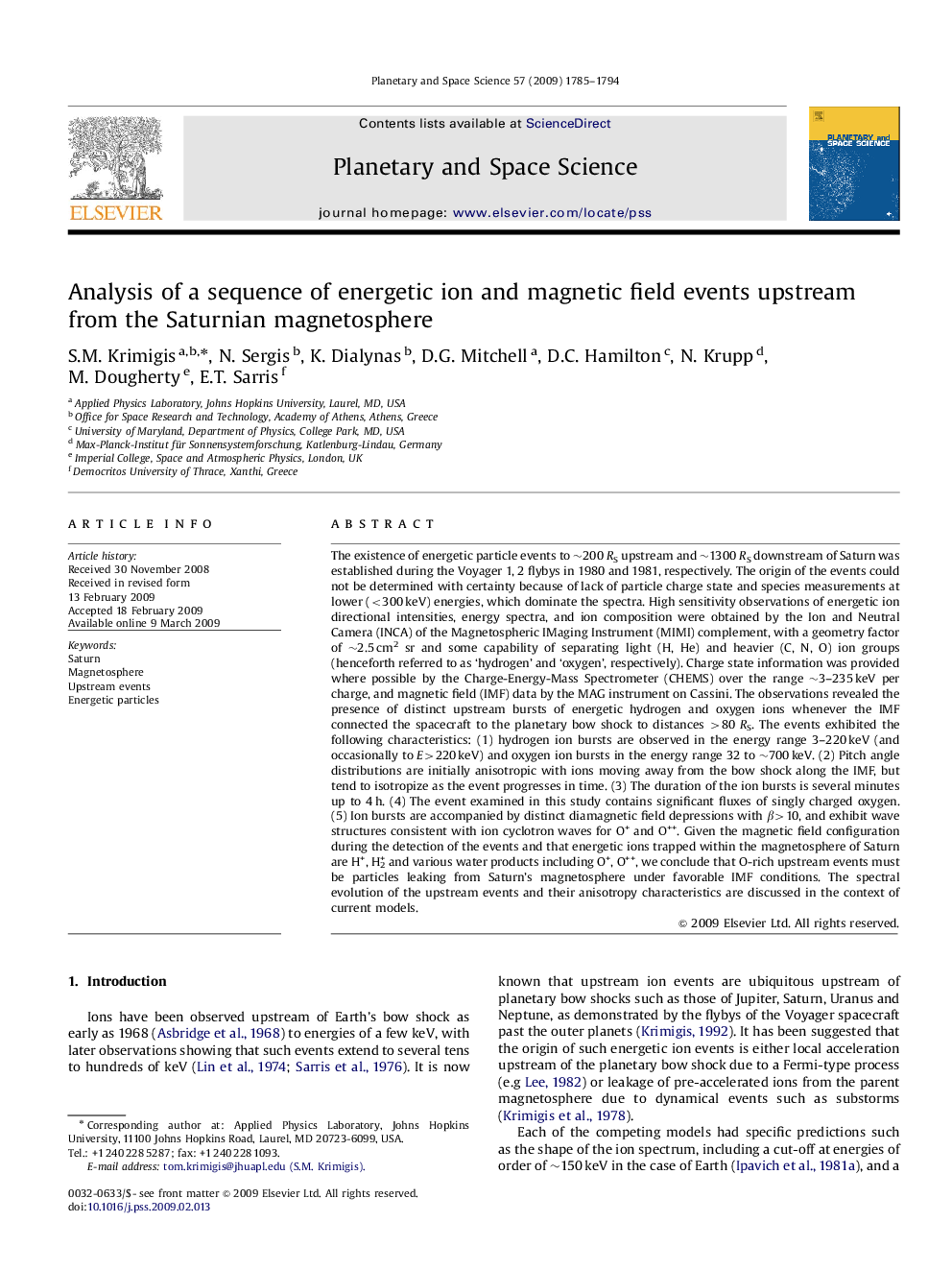| Article ID | Journal | Published Year | Pages | File Type |
|---|---|---|---|---|
| 1781934 | Planetary and Space Science | 2009 | 10 Pages |
Abstract
The existence of energetic particle events to â¼200 RS upstream and â¼1300 RS downstream of Saturn was established during the Voyager 1, 2 flybys in 1980 and 1981, respectively. The origin of the events could not be determined with certainty because of lack of particle charge state and species measurements at lower (<300 keV) energies, which dominate the spectra. High sensitivity observations of energetic ion directional intensities, energy spectra, and ion composition were obtained by the Ion and Neutral Camera (INCA) of the Magnetospheric IMaging Instrument (MIMI) complement, with a geometry factor of â¼2.5 cm2 sr and some capability of separating light (H, He) and heavier (C, N, O) ion groups (henceforth referred to as 'hydrogen' and 'oxygen', respectively). Charge state information was provided where possible by the Charge-Energy-Mass Spectrometer (CHEMS) over the range â¼3-235 keV per charge, and magnetic field (IMF) data by the MAG instrument on Cassini. The observations revealed the presence of distinct upstream bursts of energetic hydrogen and oxygen ions whenever the IMF connected the spacecraft to the planetary bow shock to distances >80 RS. The events exhibited the following characteristics: (1) hydrogen ion bursts are observed in the energy range 3-220 keV (and occasionally to E>220 keV) and oxygen ion bursts in the energy range 32 to â¼700 keV. (2) Pitch angle distributions are initially anisotropic with ions moving away from the bow shock along the IMF, but tend to isotropize as the event progresses in time. (3) The duration of the ion bursts is several minutes up to 4 h. (4) The event examined in this study contains significant fluxes of singly charged oxygen. (5) Ion bursts are accompanied by distinct diamagnetic field depressions with β>10, and exhibit wave structures consistent with ion cyclotron waves for O+ and O++. Given the magnetic field configuration during the detection of the events and that energetic ions trapped within the magnetosphere of Saturn are H+, H2+ and various water products including O+, O++, we conclude that O-rich upstream events must be particles leaking from Saturn's magnetosphere under favorable IMF conditions. The spectral evolution of the upstream events and their anisotropy characteristics are discussed in the context of current models.
Related Topics
Physical Sciences and Engineering
Earth and Planetary Sciences
Geophysics
Authors
S.M. Krimigis, N. Sergis, K. Dialynas, D.G. Mitchell, D.C. Hamilton, N. Krupp, M. Dougherty, E.T. Sarris,
